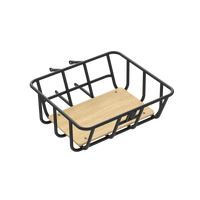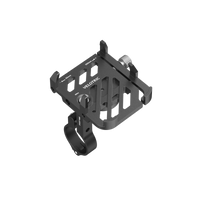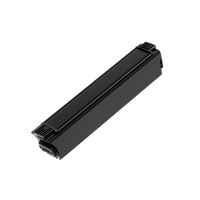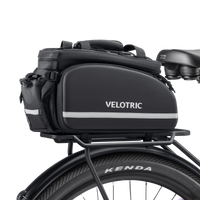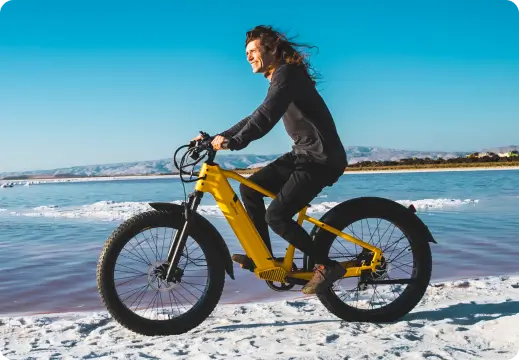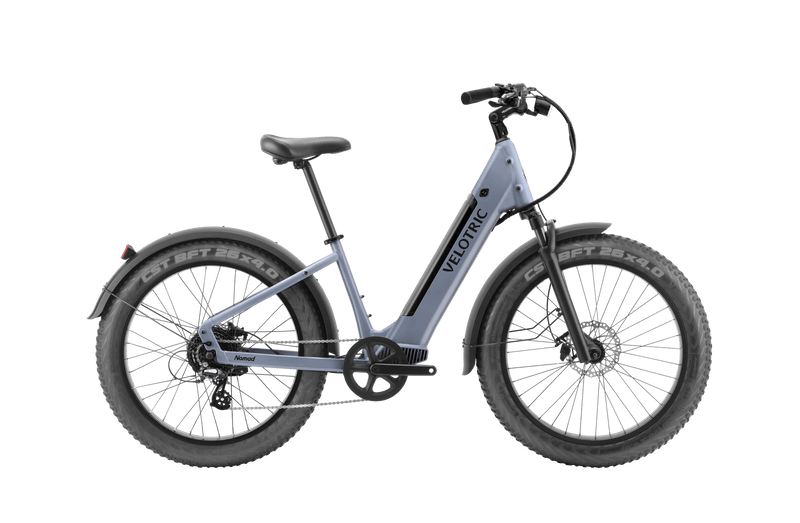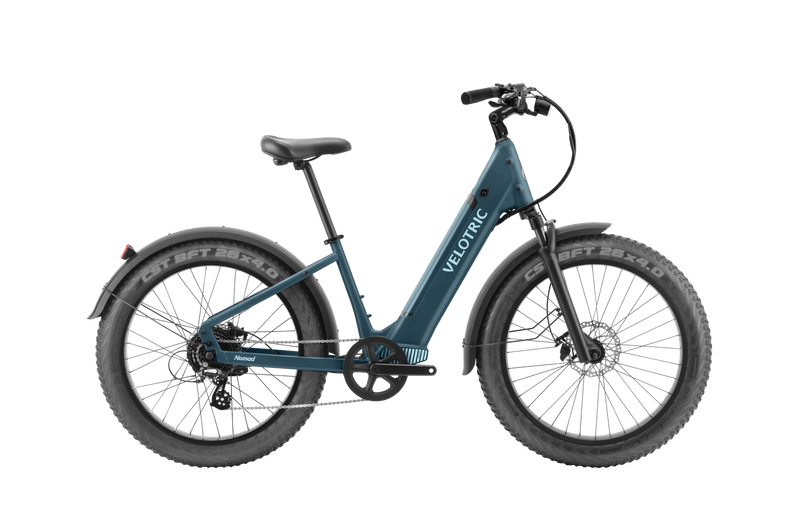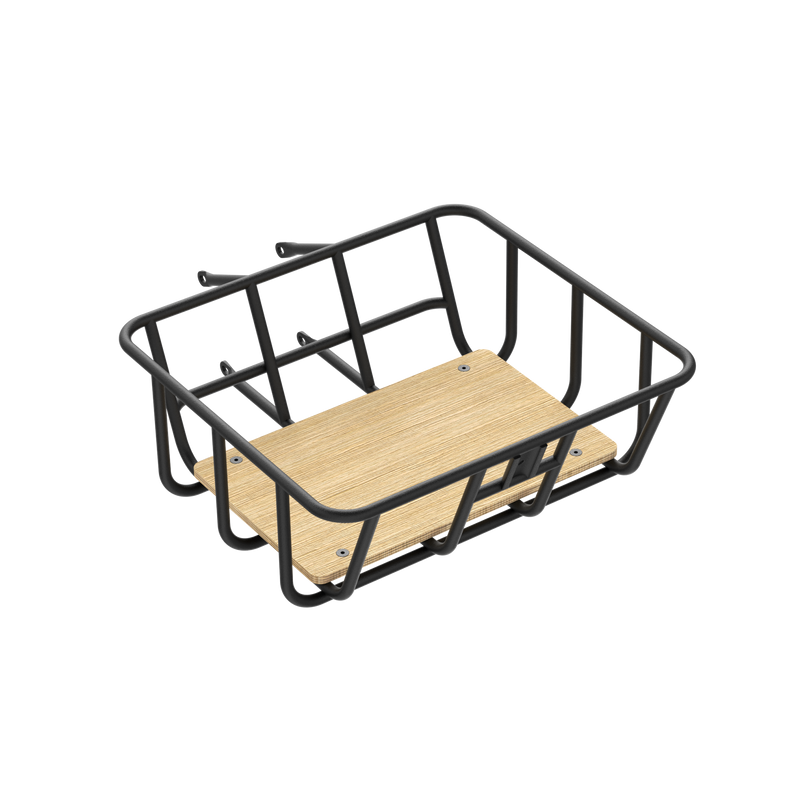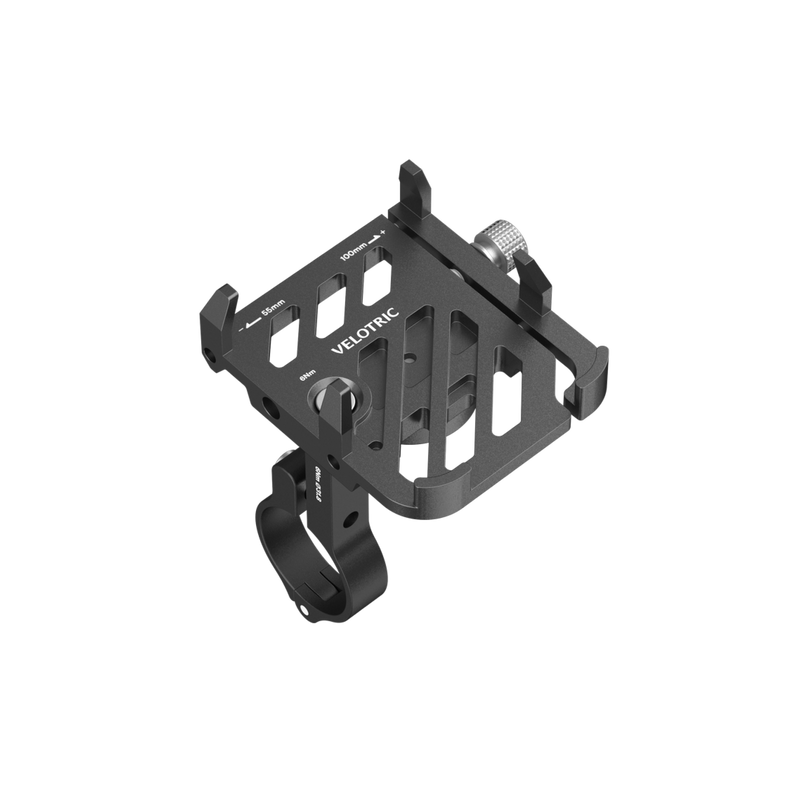If you're buying an e-bicycle for the first time, you’ve probably got your hands full learning about the different types of bike frames and how they’ll impact your riding experience.
The bike frame is the heart of the bike: It brings together all the components, from the wheels to the motor, brakes, head tube, bottom bracket, and more. Without the frame, your e-bike would just be a pile of parts.
Here's the thing: Not all bike frames are created equal. Different styles of frames cater to different riders' needs and contexts. Picking the right frame for your needs can help ensure you get a smooth ride.
The frame that's best for a mountain bike (MTB) is different from the frame that's best for a road bike, for example. But just how are the various types of bike frames different?
Below, we’ll talk about the different types of bike frame design and explain which style is best for which type of cycling. We’ll also give you some quick pointers on how to choose the best bike frame for you according to your purpose, whether it's long-distance riding or off-roading.
Finally, this guide will cover some of the most commonly used materials in bike frames.
With this information at your fingertips, you'll have all the knowledge you need to confidently comparison-shop e-bikes and get one with a frame that's perfect for you.
Step-through bike frames
It's all in the name: Step-through bikes are characterized by the fact that you can step through the frame to get on them. In contrast, high-step bike frames require you to hoist your leg up and over the rear wheel to climb on.
There's a good reason for the difference. Step-through bikes were developed in the late 1800s to accommodate female cyclists.
Women at the time wore long skirts that would get in the way if they tried to swing a leg up and hoist themselves onto a traditional bike seat.
The step-through design made it possible for cyclists in skirts to get on their bikes easily and elegantly. If you look at a modern step-through model, you'll see that it has a lower frame, making it comfortable to mount and dismount. Today, this type of frame can be beneficial for cyclists with joint pain or arthritis.
Velotric's Discover 1 and Nomad 1 e-bikes offer step-through frames perfect for everyday riding. These frames are suitable for riders from 5’1” to 6’4”.
Pros and cons of step-through bike frames
Step-through bikes have a few key advantages. Here are the highlights:
- Easy to get on and off. The main advantage of a step-through bike is how easy it is to get on and off. This kind of frame is ideal for cyclists who may struggle with mobility or range of motion in their hips, making it hard to swing a leg up and over a frame. Older riders or those recovering from injuries may be fans of step-through frames.
- Good cargo capacity. Step-through bikes can easily haul cargo with a trailer attached. For example, they're ideal for delivery drivers. You can haul your parcels, food orders, or other goods, and easily hop on and off your bike as you make deliveries. Even if you aren't a delivery driver, simply being able to hop on and off your bike while running errands can be a big plus.
- Outfit flexibility. Since they don't require wild acrobatics to mount and dismount, step-through bikes can also accommodate formal outfits. The step-through bike is a great pick if you want to wear a skirt or a dress. It's also a good choice if you're wearing attire like a pantsuit, which is less likely to get torn, wrinkled, or otherwise damaged during a step-in mount and dismount.
Step-through bikes aren't perfect. They have a couple disadvantages, like the following:
- Bulkier frame. Step-through bikes are generally heavier and more unwieldy than high-step bikes. High-step bikes have an extra frame tube that connects the front and back of the bike (more on that below). Without that bar adding stability, step-through bikes must rely on a sturdier frame to stay intact.
- Not great for rough terrain. The less stable nature of the step-through bike frame also means that it's not ideal for tough terrain (like what you might encounter while mountain biking). Overall, the step-through frame is better for everyday activities, like commuting to work or running errands. For off-roading adventures, try a high-step model.
High-step bike frames
High-step bikes, also referred to as step-over bikes, require the user to swing their leg up and over the back wheel to straddle the bicycle frame and get on the seat.
Riders have to get on this way because of the diamond or triangle-like frame construction. The shape is created by a top frame tube that runs from the front of the bike — from just below the head tube — through to the back wheel.
As we mentioned above, the step-through frame doesn’t have this frame tube, which is what allows step-through riders to straddle the bike and get on the seat.
Velotric's Nomad 1 and Discover 1 bikes also come in high-step models. They’re suitable for rider heights from 5’6” to 6’9”.
Pros and cons of high-step bike frames
High-step bike frames are suitable for diverse purposes. You'll see this type of frame used in everything from gravel bikes to city bikes and racing bikes. Here are some of the advantages of this model:
- Durability. High-step bikes are more sturdy than step-through bikes, thanks largely to their unique frame. The triangle/diamond-shape with the frame tube connecting the front and back of the bike adds stability, creating a more robust bike. This additional element helps to balance and strengthen the frame, making it more hearty and long-lasting.
- Better suited for tough terrain. Thanks to the added durability brought by the diamond/triangle shape, the high-step bike is also better suited to rough terrain than the step-through bike. If you want to scale the highest peak or go racing across unpaved surfaces, the high-step model is a great pick. Be aware, however, that high-step bikes still aren’t the equivalent of a mountain bike.
- Lightweight. High-step bikes tend to be lightweight and easier to maneuver than step-through models. This might seem counterintuitive — after all, the high-step model has that additional component, the frame tube that creates the triangle/diamond shape — wouldn't that make it heavier? In fact, it's because of this bar that high-step frames can afford to be lightweight. The bar makes for a more stable structure.
Of course, high-step bikes have disadvantages too. Some of the cons include the following:
- Pricey to customize. High-step bikes can be costly to customize. If you want to adapt the frame to your needs (perhaps you want to have the bike adjusted to suit a certain type of terrain), you're probably going to end up paying a few hundred dollars.
- Performance limitations. Yes, high-step bikes are more robust and durable than step-through bikes. However, that doesn't mean they're suited for all terrains. For example, if you're planning to get into BMX, you’ll want a dedicated BMX bike. The same is true if you're pursuing mountain biking — a mountain bike frame will have the structure, suspension, and tires for safe riding on extreme surfaces.
How to choose the best bike frame style for you
So now you know the difference between a step-through versus a high-step bike. But the question is, which one is right for you? Here's what to think about when deciding on your frame:
- Why you'll be riding. Will you be riding your e-bike to work? To run errands? For exercise? Figure out the primary purpose of your bike to guide your frame choices. If you're going to be riding to and from work or performing everyday errands, a step-through model might be preferable. If you're looking to get your exercise and want to cycle up hills to maximize your workout, try a high-step model instead.
- Where you'll be riding. This one is pretty straightforward. If you anticipate riding mostly on flat surfaces, such as city roads, opt for a step-through model. As mentioned, these frames aren't robust enough to handle a lot of hilly terrain. If you dream of pedaling uphill, a high-step model is a must.
- What you'll be wearing. People who use their bikes to commute to work may prefer a step-through model. Why? Odds are you wear some kind of formal clothing to work, whether it's a dress or a pantsuit. A step-through frame will be kinder on your clothing, helping you arrive at work looking almost as fresh as when you left the house (psst, get more tips for cycling to work here).
What size bike frame should you get?
Bike frames come in various sizes, and high-step versus step-through frames are generally suited for people of different heights in terms of frame size. For example, Velotric's high-step frame is suitable for cyclists from 5’1” to 6’4,” while the step-thru frame is suitable for cyclists from 5’6” to 6’9.”
That said, picking a fitting frameset is just one part of the bike sizing process. You also have to consider details like the bike's seat post height and handlebar height.
For example, a lower seat and higher handlebars makes for a more upright riding position. While this may be convenient for casual city riding, it's not ideal for racers who want to keep their bodies low to improve aerodynamics.
Our guide to bike fitting covers all the essentials, helping you fit your bike to enhance ride quality.
The best bike frames by use case
Still not sure which bike frame is right for you? A look at some popular use cases for modern cyclists can help.
The best bike frame for commuting
For commuters, the step-through frame is the obvious choice. It's easy to mount and dismount, so your work clothes will be less likely to get stretched, torn, or wrinkled. Plus, it's convenient for running work-related errands that might require you to hop on and off your bike frequently.
The best bike frame for off-road riding
If you're more likely to take your bike into the great outdoors instead of to the office, a high-step frame is the better bet. High-step frames are more durable and robust, so they hold up better on hills, unpaved surfaces, and other tough terrain.
The best bike frame for long distance riding
Planning a lengthy bike ride? A high-step frame is preferable. You won't be getting on and off frequently, so a step-through model's benefits are lost on you. Plus, high-step models are lightweight, so you don't have to work as hard to pedal — meaning you can ride for longer without getting tired.
The best bike frame for comfortable riding
The question of "comfort" depends largely on context. If you're a delivery driver riding through the city and making frequent stops, the easy mount and dismount of a step-through bike is probably more comfortable for you. However, if you're an off-roader going on unpaved paths, a more robust high-step model is likely best.
What makes e-bike frames different?
Both e-bike and standard bike frames can come in either a step-through or high-step model. However, e-bike frames are unique as they also have to accommodate an integrated battery, which powers the electric motor that carries the e-bicycle forward.
Depending on the bike, the e-bike motor can allow for pedal assist (which helps to support the cyclist's pedaling), and throttle assist (which powers the bike forward even when the rider isn't pedaling at all). Velotric's e-bikes have both a pedal assist system (PAS) and throttle assist.
The bike's frame accommodates a removable battery, certified by LG/Samsung. Velotric's bike batteries have been certified by Underwriters Laboratories (UL2271), a global safety standards organization, attesting to their quality.
Velotric's 48V 14.4Ah batteries charge completely in just six hours. For the Discover 1, that gives you up to 65 miles of range. For the slightly heavier Nomad 1, you'll get a max range of up to 55 miles.
What are bike frames made out of?
Last but not least, bike frames don't just differ in terms of style. They can also vary in the materials they're made of. Here are some common different frame materials.
Aluminum
Aluminum is the most common bike frame material. It's relatively light-weight, resistant to rust, and is strong given how light-weight it is. Plus, aluminum is affordable, so you can get a good-quality bike with an aluminum frame without breaking the bank. Case in point: Velotric features aluminum bike frames.
Steel
Steel used to be the favored material for bike frames, in part thanks to its high tensile strength. However, steel has become less popular because of how heavy it is. Plus, steel frames are costly. There’s a type of steel called chromoly, a chrome-alloy steel including molybdenum and carbon; it's more lightweight but also more pricey.
Carbon fiber
Carbon fiber frames are even lighter than aluminum, while still being very sturdy. They’re made of carbon fiber sheets bonded together using resin. This low-density material is great at absorbing shock, which is why you often see carbon frames used in pricey mountain bikes and road bikes.
Titanium
Titanium is robust. It has the highest strength-to weight ratio of all the materials listed here. It’s super corrosion-resistant, making titanium frames durable and long-lasting. The drawback? Titanium is pretty hard to come by and therefore also very expensive. Frame builders charge a good price for higher-end titanium bikes!
Discover why Velotric e-bikes are so popular
Find your ideal e-bike today with Velotric. Our Discover 1 and Nomad 1 bikes come in both high-step and step-through models, accommodating all riders. The Discover 1 has slimmer tires, while the Nomad 1 is a fat tire bike that can tackle all kinds of rugged environments.
The Discover 1 has a 500W rated (900W peak) motor, while the Nomad 1 has 1 750W rated motor. Hint: Not sure what those numbers mean? Our guide to e-bike motors has you covered.
Both bikes charge fully in just six hours, so you don't have to wait long between rides. The Discover 1 and Nomad 1 also both have five-level pedal assist, throttle assist, and walk mode — as well as hydraulic disc brakes.























